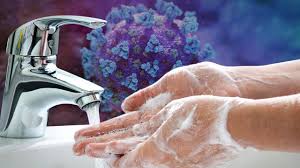Infection Prevention and Control
Infection Prevention and Control
Many people may not realise that humans share our planet earth with not just other people, plants and animals but also with myriads of microorganisms which we cannot see with our naked eyes, except under powerful microscopes. In fact, these microorganisms are in the air we breathe, in water, in and on our bodies and in the natural environment. While some of these micro- or unicellular organisms are very useful to humans (non-pathogenic), others are quite harmful and to humans under the right conditions (pathogenic). Favourable conditions under which harmful microorganisms multiply and grow, include; SUSCEPTIBLE HOST/FOOD, MOISTURE, WARMTH and TIME.

In recent years, the outbreak of different types of diseases and infections such as; HIV, Norovirus, Swine Flu, Bird flu, Covid-19 and various Healthcare Associated Infections (HAIs), with some outbreaks rising to epidemic and pandemic proportions, have led to more focus by government and Health and Social Care professionals on various initiatives, legislation, procedures and guidelines on how to prevent and control the spread of infections within health and social care sectors and in the communities.
It is everyone’s responsibility to prevent and control the spread of infection. Infection prevention and control relates to all necessary actions undertaken to prevent the growth and spread of harmful microorganisms such as pathogenic bacteria, viruses and fungi, within the health and social care sectors. Although no one is immune to infections some individuals and groups are more susceptible to infections due to risk factors such as; age, low immunity, poor nutrition, incontinence, antibiotic therapy, breaks in the skin (open wounds from operation or injury), underlying medical conditions (e.g. cancer, diabetes, heart or breathing problems) and indwelling medical devices (e.g. urinary catheters or gastric feeding tubes and colostomy stoma).
What is Infection?
Infection can be described as an invasion and multiplication of harmful microorganisms within any organ or system of a host. The host can be a person or an animal. If an infection can be passed from one person to another then it is known to be communicable or Infectious. Infections can cause diseases which make individuals to experience symptoms and feel unwell. Infections can:
- Affect any organ or system in the body
- Be passed from person to person
- Lead to unpleasant signs and symptoms
- Range from being mild to severe
- Be fatal
- Be treatable.

The importance of Infection Prevention and Control:
We are constantly surrounded by invisible microorganisms, some of which can contribute to the development and spread of harmful infection to people within health and social care settings and in the communities. Infections acquired in health and social care environments where there are many vulnerable people can have serious consequences such as worsening of underlying medical condition, lengthening of recovery period and even life-threatening conditions.

As Health and Social Care workers, our role and responsibility in preventing and controlling infection is vital for the following reasons;
- Infections cause suffering, and in severe cases can lead to death
- Infections can spread very quickly throughout a group of people and within the community
- Old diseases can reappear while new ones are constantly developing
- Some infections are becoming resistant to treatment
How Infection is Spread – Direct, Indirect & Cross Infection.
The process by which harmful microorganisms can be spread from person to person is called cross-infection or cross-contamination. In order for infection to spread, there has to be some sort of direct or indirect contact between people and/or contaminated objects.

- DIRECT contact occurs when physical contact takes place between a person who is infected (Carrier or Reservoir) and a person who is not (Susceptible Host).
- INDIRECT contact occurs when infecting microorganisms are transported via contaminated objects such as food, water, objects, animals or insects.
- CROSS-INFECTION is the spread of infection from one person to another. Cross-infection can occur from incorrect handling of food, clinical waste such as sharps and contaminated swabs, blood and bodily fluids and not following guidelines for hand-washing procedures.









